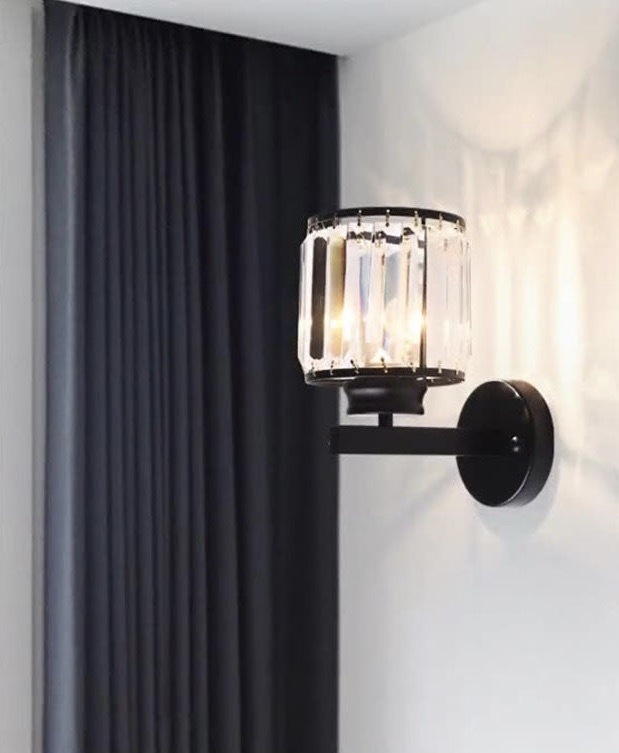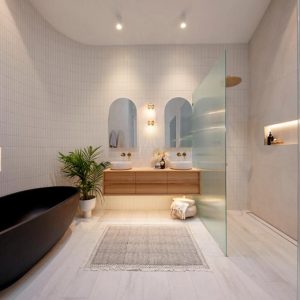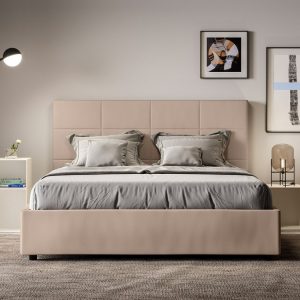
Office lighting plays a crucial role in the productivity and well-being of employees. It has been proven that the right lighting can have a significant impact on employee mood, focus, and overall performance. In addition, proper lighting can also contribute to creating a comfortable and welcoming office environment. With the advancements in technology and design, there are now various ratedecor lighting options available for modern offices. From LED lighting to smart lighting solutions, there are endless possibilities to enhance the lighting in your workspace. In this article, we will explore the importance of office lighting for productivity and well-being, the latest trends in office lighting for 2023, and how to optimize your office lighting for optimal results.
The Importance of Proper Office Lighting for Productivity and Well-being
Proper office lighting is essential for both employee productivity and well-being. Studies have shown that inadequate lighting can lead to eye strain, headaches, fatigue, and even depression. On the other hand, good lighting can improve employee mood, focus, and overall performance. It has been found that natural light is the most beneficial for employees as it helps regulate their circadian rhythm and promotes better sleep quality. However, not all offices have access to ample natural light, which is where artificial lighting comes into play.
Artificial lighting should be carefully designed to mimic natural light as much as possible. This can be achieved through the use of LED lights with adjustable color temperatures that can simulate the different phases of natural light throughout the day. Additionally, proper lighting design should also take into consideration factors such as glare reduction, uniformity of light distribution, and task-specific lighting.
The Latest Trends in Office Lighting for 2023
As we enter 2023, there are several exciting trends in office lighting that are gaining popularity. One of these trends is the use of human-centric lighting, which focuses on creating lighting environments that support human health and well-being. This involves adjusting the color temperature and intensity of the lighting throughout the day to align with the natural circadian rhythm of employees.
Another trend is the integration of smart lighting solutions into office spaces. Smart lighting systems allow for greater control and customization of lighting settings, such as dimming, color temperature adjustment, and scheduling. These systems can be controlled through mobile apps or voice commands, providing convenience and flexibility for employees.
Furthermore, there is a growing emphasis on sustainable lighting solutions in modern offices. This includes the use of energy-efficient LED lights, as well as the incorporation of natural light through skylights and large windows. Sustainable lighting not only reduces energy consumption but also promotes a healthier and more eco-friendly work environment.
LED Lighting: The Future of Office Illumination
LED lighting has become increasingly popular in office spaces due to its numerous benefits. LED lights are highly energy-efficient, consuming significantly less electricity compared to traditional incandescent or fluorescent lights. This not only reduces energy costs but also contributes to a more sustainable workplace.
LED lights also have a longer lifespan compared to other types of lighting, which means less frequent replacements and maintenance. This can save both time and money for businesses in the long run. Additionally, LED lights are more durable and resistant to shock and vibration, making them ideal for office environments.
Furthermore, LED lights offer greater flexibility in terms of color temperature adjustment. This allows for customization of lighting settings to suit different tasks and employee preferences. LED lights can be easily dimmed or brightened, providing optimal lighting conditions for various activities throughout the day.
Natural Lighting vs. Artificial Lighting: Which is Better for Your Office?
The debate between natural lighting and artificial lighting in office spaces has been ongoing for years. Both options have their pros and cons, and the ideal solution may vary depending on the specific needs and constraints of each office.
Natural lighting has numerous benefits for employee well-being and productivity. Exposure to natural light has been linked to improved mood, reduced stress levels, and increased vitamin D production. Natural light also helps regulate the circadian rhythm, which can improve sleep quality and overall health. Additionally, natural light provides a more visually appealing and dynamic environment, which can enhance creativity and focus.
However, not all offices have access to ample natural light. Some offices may be located in buildings with limited windows or in areas with little sunlight. In such cases, artificial lighting becomes necessary. Artificial lighting can be carefully designed to mimic natural light as much as possible. This can be achieved through the use of LED lights with adjustable color temperatures that can simulate the different phases of natural light throughout the day.
To strike a balance between natural and artificial lighting, it is important to consider factors such as the orientation of the office space, the placement of windows, and the use of reflective surfaces to maximize the distribution of natural light. Additionally, artificial lighting should be designed to complement natural light and provide consistent and uniform illumination throughout the workspace.
How to Choose the Right Color Temperature for Your Office Lighting
Color temperature refers to the perceived warmth or coolness of light. It is measured in Kelvin (K) and can have a significant impact on employee mood and productivity. Choosing the right color temperature for your office lighting is crucial to create a comfortable and productive work environment.
In general, cooler color temperatures (around 5000K) are recommended for tasks that require high levels of concentration and focus, such as reading or detailed work. Cooler temperatures are known to promote alertness and can help reduce eye strain.
On the other hand, warmer color temperatures (around 3000K) are more suitable for areas where employees need to relax or socialize, such as break rooms or lounge areas. Warmer temperatures create a cozy and inviting atmosphere that promotes relaxation and social interaction.
It is also important to consider the time of day when selecting color temperatures. For example, cooler temperatures are more suitable for morning and early afternoon when employees need to be alert and focused. As the day progresses, warmer temperatures can be used to create a more relaxed and calming environment.
The Benefits of Task Lighting for Workplace Efficiency
Task lighting refers to lighting that is specifically designed to provide focused illumination for specific tasks or activities. It can significantly improve employee focus and productivity by reducing eye strain and providing optimal lighting conditions for detailed work.
Task lighting can be implemented in various ways depending on the specific needs of each workspace. For example, adjustable desk lamps can provide targeted lighting for individual workstations, allowing employees to customize their lighting settings based on their preferences and tasks. Under-cabinet lighting can be used in kitchens or laboratories to provide additional illumination for specific tasks.
Furthermore, task lighting can also contribute to energy efficiency by reducing the need for overall ambient lighting. By providing localized lighting where it is needed most, task lighting can help reduce energy consumption and costs.
The Role of Ambient Lighting in Creating a Comfortable Office Environment
Ambient lighting refers to the general illumination of a space. It sets the overall mood and atmosphere of an office environment and plays a crucial role in creating a comfortable and welcoming workspace.
Proper ambient lighting should provide consistent and uniform illumination throughout the office space. It should not be too bright or too dim, as both extremes can negatively impact employee well-being and productivity. Additionally, ambient lighting should be free from glare or flickering, as these can cause eye strain and headaches.
There are various ways to incorporate ambient lighting into your office design. This can include the use of overhead lights, recessed lighting, or wall sconces. It is important to consider factors such as the size and layout of the office space, as well as the color temperature and intensity of the ambient lighting.
Smart Lighting Solutions for Modern Offices
Smart lighting solutions are becoming increasingly popular in modern offices due to their ability to improve energy efficiency and employee comfort. Smart lighting systems allow for greater control and customization of lighting settings, providing convenience and flexibility for employees.
One of the key features of smart lighting is the ability to adjust lighting settings based on occupancy or time of day. Motion sensors can be used to detect employee presence and automatically turn on or off lights in specific areas. This not only saves energy but also provides a more convenient and hassle-free experience for employees.
Furthermore, smart lighting systems can be controlled through mobile apps or voice commands, allowing employees to easily adjust lighting settings based on their preferences or tasks. This level of customization can significantly improve employee comfort and productivity.
Smart lighting solutions also offer the ability to monitor and analyze energy consumption data, allowing businesses to identify areas for improvement and optimize their lighting systems for maximum efficiency.
How to Incorporate Lighting Design into Your Office Interior
Lighting design is an important aspect of office interior design that can greatly enhance the overall look and feel of a workspace. Proper lighting design should take into consideration factors such as the size and layout of the office space, the specific needs of employees, and the desired atmosphere.
One way to incorporate lighting design into your office interior is through the use of accent lighting. Accent lighting can be used to highlight specific areas or objects in the office, such as artwork or architectural features. This can create visual interest and add a touch of elegance to the space.
Another way to enhance your office interior through lighting design is by using color-changing lights. These lights can be programmed to change colors based on specific events or moods, allowing for a dynamic and visually appealing environment.
Additionally, the placement and direction of lights can also have a significant impact on the overall aesthetics of an office space. For example, uplighting can create a sense of height and openness, while downlighting can provide a more intimate and cozy atmosphere.
Sustainable Lighting Options for Eco-Friendly Offices
With the growing emphasis on sustainability, many offices are now opting for eco-friendly lighting options. Sustainable lighting not only reduces energy consumption but also promotes a healthier and more eco-friendly work environment.
One of the most popular sustainable lighting options is LED lighting. LED lights are highly energy-efficient and consume significantly less electricity compared to traditional incandescent or fluorescent lights. They also have a longer lifespan, which means less frequent replacements and maintenance.
Another sustainable lighting option is the use of natural light. Offices can incorporate skylights or large windows to maximize the use of natural light during the day. This not only reduces the need for artificial lighting but also provides employees with the numerous benefits of natural light, such as improved mood and productivity.
Furthermore, offices can also consider using lighting controls and sensors to optimize energy consumption. This can include occupancy sensors that automatically turn off lights in unoccupied areas, as well as daylight sensors that adjust artificial lighting based on the amount of natural light available.
Proper office lighting is crucial for employee productivity and well-being. It has been proven that the right lighting can have a significant impact on employee mood, focus, and overall performance. With the latest trends in office lighting for 2023, such as human-centric lighting and smart lighting solutions, there are endless possibilities to enhance the lighting in your workspace.
LED lighting is becoming increasingly popular in office spaces due to its numerous benefits, including energy efficiency and customization options. Natural lighting is also highly beneficial for employee well-being, but not all offices have access to ample natural light. Therefore, a balance between natural and artificial lighting should be struck to create an optimal work environment.
Choosing the right color temperature for your office lighting is crucial to create a comfortable and productive work environment. Task lighting can significantly improve employee focus and productivity by providing focused illumination for specific tasks or activities. Ambient lighting plays a crucial role in creating a comfortable and welcoming office environment.
Smart lighting solutions offer greater control and customization of lighting settings, providing convenience and flexibility for employees. Lighting design can greatly enhance the overall look and feel of an office interior, while sustainable lighting options promote energy efficiency and eco-friendliness.
In conclusion, optimizing your office lighting is essential for creating a productive and comfortable work environment. By considering the latest trends, such as LED lighting and smart lighting solutions, and incorporating sustainable and well-designed lighting options, you can create an office space that promotes employee well-being and productivity.

